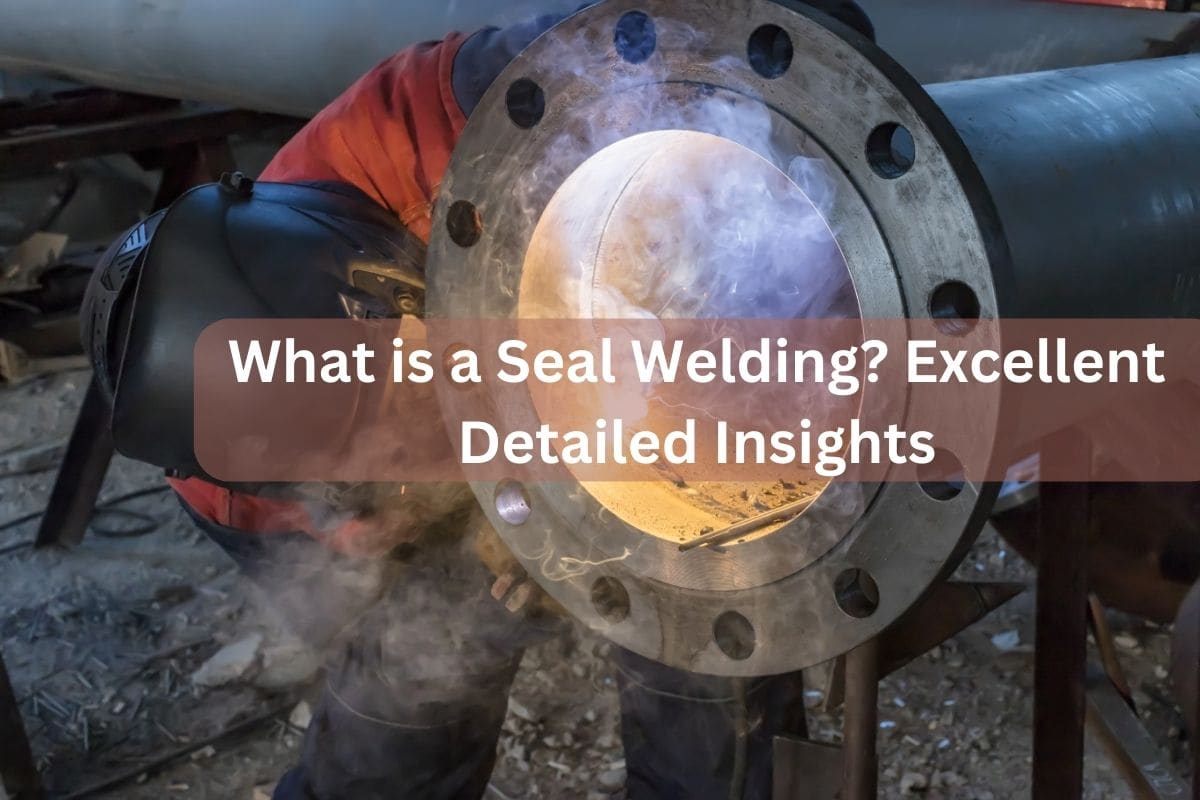Have you ever paused to wonder how massive storage tanks, high-pressure pipelines, and various industrial equipment stay leak-free, even under the harshest conditions? The answer lies in the art and science of ‘Seal Welding’.
In this article, we’re diving deep into the world of seal welding – from its definition to its applications and much more.
Whether you’re familiar with the basics of welding or seeking deeper insights, this article promises a wealth of knowledge.
What Exactly is Seal Welding?
Seal welding plays a pivotal role in various industries, ensuring that connections remain air-tight and water-tight.
By design, these welds resist leakages, preventing fluids (be it gaseous or liquid) from penetrating a cavity.
From the construction sites that raise skyscrapers to the manufacturing floors that produce vehicles, seal welding is omnipresent, ensuring strength, corrosion resistance, and that all-important air & water-tightness.
Why is Seal Welding So Essential?
The Hermetic Seal Promise
The goal of seal welding is straightforward: create a hermetic or pressure-tight seal between two components or surfaces.
This is crucial for components that can’t afford even the slightest leak. Think of a pressure vessel – a leak could not only cause loss of material but potentially lead to catastrophic failures.
Abiding by Standards
The American Welding Society (AWS) has clear standards for seal welding, particularly AWS A3.0 and A2.4. These standards ensure that welds truly prevent any leakage, guaranteeing a hermetic or pressure-tight seal.
Diverse Applications
While it’s used in creating pressure vessels and pipelines, seal welding is also indispensable in constructing equipment that will be stationed in hazardous environments.
Additionally, they’re used in high-temperature settings, where they not only provide a seal but also protect against thermal stresses.
Read Also : What is an Inverter Welder? Useful & Excellent Details!
How to Achieve the Perfect Seal Weld?
Getting the ideal seal weld isn’t just about welding two materials together. It’s a process that requires precision, the right materials, and thorough testing.
Process Control
It begins with ensuring a tight fit-up, having minimal gaps, and aligning everything perfectly. Remember, the goal is a leak-proof connection, so every millimeter counts.
Choosing the Right Material & Design
The selection of appropriate welding materials is crucial. Additionally, the joint design and the weld bead shape can determine the success of the seal weld.
Testing Matters
Once the weld is in place, non-destructive methods like radiography or ultrasonic testing play a critical role in verifying the quality of the weld.
Making Sense of Seal Welding Symbols
Interpreting welding symbols is like decoding a language. AWS A2.4 provides the requirements for these symbols, with “seal weld” being indicated in the tail of the symbol. For welders and inspectors, these symbols serve as a map, guiding them on the weld requirements.
Comparing Seal Welds with Other Welds
Seal vs. Socket Weld
Seal welds focus on creating that leak-proof connection. In contrast, socket welds, primarily used in small-diameter piping systems, prioritize a smooth connection.
While both have their places, it’s crucial to understand that seal welds are full-penetration welds, whereas socket welds are partial-penetration.
Read Also : What is a Socket Weld? A Brilliant, Simple Explanation
Seal vs. Fillet Weld
A common comparison, but they serve different purposes. Seal welds aim for a leak-tight joint, while fillet welds, with their triangular-shaped cross-section, are all about strength and support.
Read Also : What is a Fillet Weld? Impressive Details You Need
Should You Use Seal Welding for Threaded Connections?
Threaded joints present a unique challenge.
Welding materials need to be robust enough to withstand the process. Plus, threaded joints aren’t ideal for corrosive fluids or steam service.
If you’re considering them, make sure they’re accessible for easy maintenance and inspection.
Conclusion
Seal welding, though often unseen, ensures the safety and efficiency of countless industries. It’s the unsung hero that keeps our equipment leak-free and running smoothly.
Whether you’re in the field or merely curious, understanding seal welds can provide a deeper appreciation for the intricacies of modern construction and manufacturing.
We hope this article shed light on this crucial process. Got thoughts or questions on seal welding? We’d love to hear your insights in the comments below!


